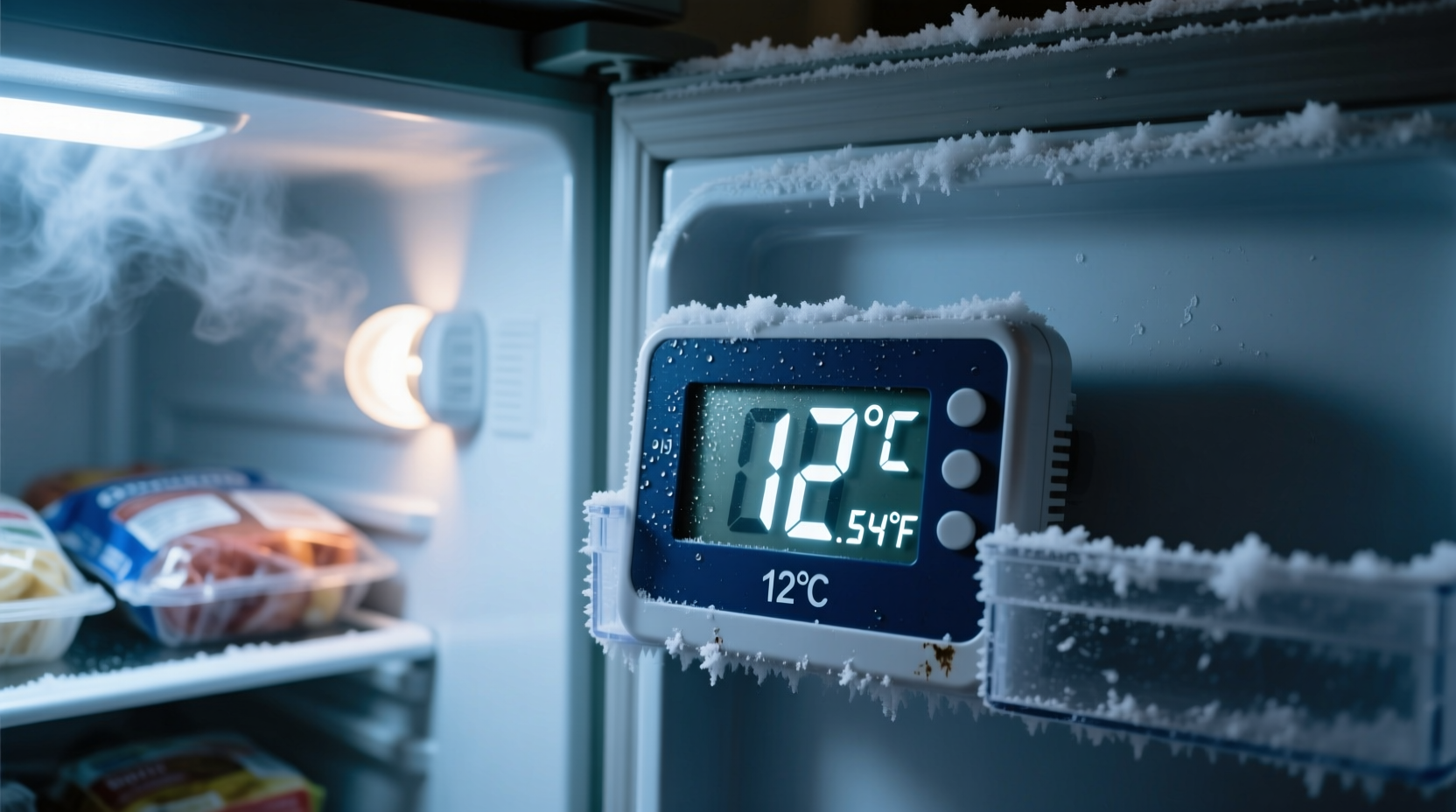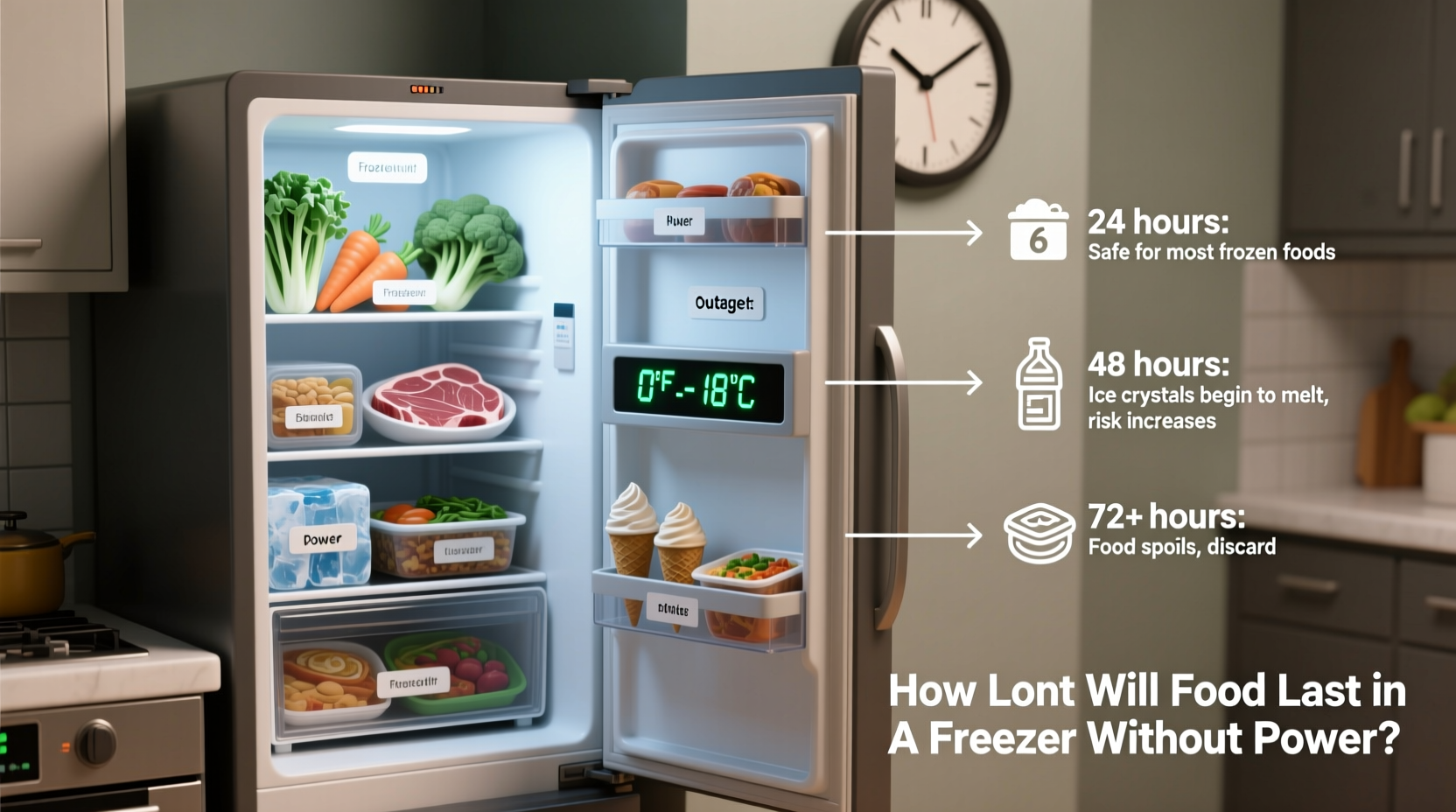When the power goes out, your freezer becomes a critical food safety concern. Understanding exactly how long will food last in a freezer without power can prevent food waste and protect your family from foodborne illness. Let's explore the science-backed guidelines that determine frozen food safety during power outages.
What Happens to Your Freezer During a Power Outage
The moment power cuts off, your freezer begins a predictable temperature journey. Initially, the insulation works to maintain cold temperatures, but eventually, heat transfer from the surrounding environment causes temperatures to rise. The critical threshold is 40°F (4°C) — once your freezer reaches this temperature, food enters the "danger zone" where bacteria multiply rapidly.
Key Factors That Determine Food Safety Duration
While the 48-hour rule for full freezers is a good starting point, several variables affect how long food will stay safe in a freezer without electricity:
- Freezer fullness: A tightly packed freezer maintains cold temperatures longer because frozen items act as 'cold batteries'
- Freezer type: Upright freezers lose cold air faster when opened than chest freezers
- Insulation quality: Newer models with better insulation perform better during outages
- Ambient temperature: Higher room temperatures accelerate thawing
- Door openings: Each opening introduces warm air, significantly reducing safe timeframes
| Freezer Type | Full Freezer Duration | Half-Full Freezer Duration | Critical Temperature Threshold |
|---|---|---|---|
| Chest Freezer | 3-5 days | 2-3 days | 40°F (4°C) |
| Upright Freezer | 2-3 days | 1-2 days | 40°F (4°C) |
| Refrigerator Freezer Compartment | 1-2 days | 12-24 hours | 40°F (4°C) |
This comparison shows why how long will meat last in freezer without power depends significantly on your freezer type. Chest freezers consistently outperform upright models during extended outages due to their superior cold air retention.
Immediate Actions When Power Fails
What you do in the first minutes after a power outage dramatically impacts freezer food safety during power outage. Follow these critical steps:
- Keep freezer doors closed: Every opening releases cold air and introduces warm, moist air
- Add ice packs if available: Strategically place commercial ice packs around critical items
- Group similar items together: Creates thermal mass that maintains colder temperatures longer
- Consider transferring critical items: If you have access to a working freezer elsewhere
- Place a thermometer inside: Monitor actual temperatures rather than guessing timeframes
According to USDA Food Safety and Inspection Service guidelines, "the freezer door should be kept closed as much as possible to prevent warm air from entering." This simple action can double the safe duration of your frozen food.

Monitoring Food Safety During Extended Outages
Don't rely solely on elapsed time when determining how to tell if frozen food is still safe after power outage. Temperature monitoring provides the most reliable assessment:
- Use an appliance thermometer to track actual freezer temperatures
- Check temperatures before power is restored if possible
- Look for ice crystals — their presence indicates food may still be safe
- Feel food packages — if they still feel refrigerator-cold, they're likely safe
The FDA emphasizes that "when in doubt, throw it out" is the safest approach to food safety. Partially thawed food with ice crystals may be safely refrozen, but any food that has reached 40°F for more than 2 hours should be discarded.
Special Considerations for Different Food Types
Not all frozen foods respond equally to power outages. Understanding power outage food safety guidelines for specific items is crucial:
- Meat and poultry: Discard if temperature reaches 40°F for more than 2 hours
- Seafood: More temperature-sensitive than other proteins
- Dairy products: Ice cream and frozen dairy desserts spoil quickly
- Prepared meals: May contain multiple ingredients with different safety thresholds
- Fruits and vegetables: Generally more forgiving but may suffer quality loss
When Power Is Restored: Critical Steps
Restoring power doesn't automatically mean your food is safe. Follow these steps to determine what to do when freezer loses power and then regains electricity:
- Check freezer temperature before opening the door
- Inspect food for ice crystals and texture changes
- Use the "sniff test" cautiously — some dangerous bacteria don't produce odors
- Discard any questionable items — food poisoning isn't worth the risk
- Thaw and cook refreezable items immediately rather than refreezing
The Red Cross emergency preparedness guidelines note that "if food still contains ice crystals or is at 40°F or below, it is safe to refreeze." This practical advice helps minimize food waste while maintaining safety standards.
Common Mistakes That Shorten Food Safety Timeframes
Avoid these critical errors that dramatically reduce how long does food stay frozen in freezer without power:
- Opening the freezer door frequently to "check" on food
- Leaving the freezer door open while deciding what to do
- Stacking warm items in the freezer during an outage
- Assuming food is safe based solely on elapsed time
- Refreezing food that has completely thawed and warmed
Context matters significantly when applying freezer food safety during power outage guidelines. These recommendations assume normal room temperatures (around 70°F/21°C). In extreme heat conditions (above 90°F/32°C), safe timeframes decrease substantially. Similarly, freezers in garages or other unconditioned spaces face additional temperature challenges during outages.
Preparing for Future Power Outages
Smart preparation can extend the safe duration of your frozen food during unexpected outages:
- Keep appliance thermometers in both refrigerator and freezer compartments
- Consider investing in a chest freezer for better outage performance
- Regularly organize your freezer to minimize door opening time
- Keep emergency ice packs frozen and ready for use
- Learn to recognize safe versus unsafe food conditions
When Guidelines Don't Apply: Special Circumstances
Standard power outage food safety guidelines have important limitations. These timeframes assume:
- Freezer was functioning properly before the outage
- Freezer temperature was at 0°F (-18°C) or below initially
- Door remains mostly closed during the outage
- Ambient room temperature is between 60-75°F (15-24°C)
- No direct sunlight exposure to the freezer unit
During extreme weather events, these conditions may not hold true, requiring more conservative safety approaches. Always prioritize health over food preservation when conditions are uncertain.











 浙公网安备
33010002000092号
浙公网安备
33010002000092号 浙B2-20120091-4
浙B2-20120091-4